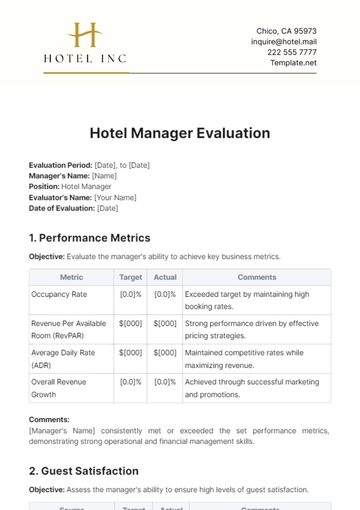Free Financial Risk Evaluation Manual

Introduction to Financial Risk Evaluation
Overview
Financial Risk Evaluation is a critical process in the management and mitigation of risks that could potentially impact the company's financial health. This process involves identifying, analyzing, and addressing various financial risks to ensure the stability and growth of the organization. The purpose of this manual is to provide comprehensive guidance on effectively conducting financial risk evaluations, aligning with the company's strategic goals and compliance requirements.
Key Principles
Financial risk evaluation is grounded in several key principles:
Comprehensive Identification: Recognizing all potential financial risks that the company may face.
Accurate Assessment: Measuring the likelihood and impact of these risks accurately.
Effective Management: Implementing strategies to mitigate identified risks.
Continuous Monitoring: Regularly reviewing and updating the risk profile.
The manual adheres to these principles to ensure a robust and proactive approach to financial risk management.
Risk Identification
Financial risk identification is the first and most crucial step in the risk management process. It involves recognizing all potential risks that could adversely affect the company's financial condition.
Types of Financial Risks
Table 1: Types of Financial Risks
Risk Type | Description |
Credit Risk | Risk of loss from a borrower's failure to repay a loan or meet contractual obligations. |
Market Risk | Risk of losses due to fluctuations in market prices and rates. |
Liquidity Risk | Risk arising from a company's inability to meet short-term financial obligations. |
Operational Risk | Risk of loss resulting from inadequate or failed internal processes, people, and systems. |
Compliance Risk | Risk of legal or regulatory sanctions due to non-compliance with laws, regulations, policies, or ethical standards. |
Risk Sources and Triggers
Identifying the sources and triggers of financial risks is crucial in developing effective risk management strategies. Sources of risk can be internal, such as operational inefficiencies, or external, like economic downturns.
Table 2: Common Risk Sources and Triggers
Source/Trigger | Risk Type | Example |
Economic Changes | Market Risk | Interest rate fluctuations, currency exchange rate changes. |
Credit Environment | Credit Risk | Changes in creditworthiness of counterparties. |
Operational Issues | Operational Risk | System failures, human errors, fraud. |
Regulatory Changes | Compliance Risk | New financial regulations, penalties for non-compliance. |
Risk Assessment
Risk assessment is the process of determining the likelihood and impact of identified financial risks. This is a critical step in understanding the extent to which potential risks can affect the company's financial health.
Risk Measurement Techniques
Various techniques are employed to measure and quantify financial risks. These include:
Value at Risk (VaR): A statistical technique used to measure the maximum potential loss over a specified time period, under normal market conditions.
Stress Testing: Involves testing the company's financial position under extreme but plausible scenarios.
Scenario Analysis: Involves examining the impact of specific changes in key variables on the company's financial performance.
Sensitivity Analysis: Assesses how different values of an independent variable affect a particular dependent variable under a given set of assumptions.
Table 3: Risk Measurement Techniques
Technique | Description | Application Example |
Value at Risk (VaR) | Measures the maximum loss over a set period and confidence level. | Used to assess market and credit risk. |
Stress Testing | Tests extreme but plausible scenarios on the financial position. | Evaluates impact of sudden market crashes. |
Scenario Analysis | Examines the impact of specific variable changes. | Analyzes effects of economic downturns. |
Sensitivity Analysis | Assesses impact of variable changes under certain assumptions. | Determines the effect of interest rate changes. |
Risk Assessment Process
The risk assessment process involves several key steps:
Data Collection: Gathering relevant data on market trends, credit histories, operational metrics, etc.
Risk Quantification: Using the above techniques to quantify risks.
Risk Factor Analysis: Analyzing how different factors contribute to the overall risk profile.
Risk Management Strategies
Once risks are identified and assessed, the next step is to manage them effectively. This involves developing strategies to mitigate, transfer, or accept risks, depending on their nature and impact.
Mitigation Techniques
Effective risk mitigation strategies include:
Diversification: Spreading investments across various financial instruments to reduce exposure.
Hedging: Using financial derivatives to offset potential losses.
Insurance: Transferring risk to an insurance company.
Limit Systems: Setting maximum exposure limits for different risk categories.
Table 4: Risk Mitigation Strategies
Strategy | Description | Application Example |
Diversification | Spreading out investments to reduce risk concentration. | Investing in multiple asset classes. |
Hedging | Using derivatives to protect against price movements. | Futures contracts to hedge currency risk. |
Insurance | Transferring risk to an insurer in exchange for premiums. | Insuring against operational liabilities. |
Limit Systems | Setting maximum exposure limits for risk categories. | Credit limits for borrowers based on risk assessment. |
Risk Response Planning
Developing a risk response plan involves:
Risk Avoidance: Eliminating activities that expose the company to risk.
Risk Reduction: Taking actions to reduce the likelihood or impact of risks.
Risk Sharing: Sharing the burden of risk with other parties.
Risk Acceptance: Accepting the risk when cost of mitigation exceeds the potential loss.
Effective planning ensures that the company is prepared to respond to risks in a way that aligns with its risk appetite and business objectives.
Risk Monitoring and Reporting
Effective risk monitoring and reporting are essential components of financial risk management. They ensure that the organization is aware of its risk profile at all times and can make informed decisions.
Ongoing Monitoring
Ongoing monitoring involves the continuous observation of the risk environment to detect any changes in risk exposure. This process includes:
Regular Review of Risk Metrics: Tracking key risk indicators (KRIs) and thresholds to identify any deviations from expected levels.
Updating Risk Assessments: Continually reassessing risks to reflect changes in market conditions, business operations, or regulatory environments.
Internal Audits: Conducting periodic internal audits to assess the effectiveness of risk management practices.
Table 5: Key Components of Ongoing Monitoring
Component | Description | Example Indicator |
Risk Indicators | Metrics used to signal potential risk exposures. | Credit utilization ratios, late payment trends. |
Market Trends | Monitoring external market movements and trends. | Stock market indices, interest rate changes. |
Operational Metrics | Tracking internal operational data for risk insights. | System downtime incidents, transaction errors. |
Reporting Protocols
Effective risk reporting ensures that relevant stakeholders are well-informed about the company's risk profile. This involves:
Regular Risk Reports: Preparing and disseminating reports that provide an overview of the current risk status, including any changes or emerging risks.
Incident Reporting: Developing a protocol for immediate reporting of risk incidents, ensuring quick response and mitigation.
Stakeholder Communication: Communicating risk information to stakeholders, including management, the board of directors, and regulators, as appropriate.
Table 6: Risk Reporting Protocols
Report Type | Frequency | Content Overview |
Regular Risk Report | Monthly/Quarterly | Summary of current risk status, key metrics, and any significant changes. |
Incident Report | As Needed | Detailed account of risk incidents and immediate responses undertaken. |
Compliance Report | Annually | Compliance status with respect to regulatory requirements and internal policies. |
Regulatory Compliance and Best Practices
In financial risk management, adhering to regulatory compliance and following industry best practices are crucial for ensuring the integrity and sustainability of the company's operations.
Compliance Requirements
Compliance with legal and regulatory standards is essential to avoid legal repercussions and maintain the company's reputation. This involves:
Understanding Regulatory Frameworks: Being aware of all relevant financial regulations at local, national, and international levels.
Implementing Compliance Protocols: Establishing internal controls and procedures to ensure compliance with these regulations.
Regular Compliance Audits: Conducting audits to assess and ensure adherence to regulatory requirements.
Table 7: Key Regulatory Frameworks and Compliance Areas
Regulatory Framework | Description | Compliance Area |
Sarbanes-Oxley Act (SOX) | U.S. law governing corporate financial records and reporting. | Financial disclosures, internal controls. |
Basel III | Global regulatory standards on bank capital adequacy and liquidity. | Capital requirements, risk management. |
Dodd-Frank Act | U.S. legislation to promote financial stability and consumer protection. | Derivatives trading, consumer lending practices. |
GDPR (General Data Protection Regulation) | EU regulation on data protection and privacy. | Handling of personal data, privacy policies. |
Industry Best Practices
Adopting best practices is key to effective financial risk management. These practices are gleaned from industry standards and expert recommendations, ensuring that the company's risk management approaches are robust and current.
Risk Management Framework: Developing a comprehensive risk management framework that aligns with the company's objectives and risk appetite.
Continuous Improvement: Regularly updating and improving risk management strategies based on new insights, technologies, and market developments.
Training and Development: Investing in training programs for staff to enhance their understanding and skills in risk management.
Table 8: Best Practices in Financial Risk Management
Best Practice | Description | Benefit |
Holistic Risk Assessment | Assessing risks across all departments and functions. | Comprehensive understanding of risk landscape. |
Integration of Risk Management | Embedding risk management in corporate strategy and culture. | Aligns risk management with business goals. |
Use of Advanced Analytics | Employing advanced tools for risk analysis and prediction. | Enhanced risk identification and assessment capabilities. |
Stakeholder Engagement | Involving all relevant stakeholders in risk management. | Ensures buy-in and comprehensive risk coverage. |
By adhering to regulatory requirements and implementing industry best practices, the company not only safeguards itself against financial risks but also positions itself for sustainable growth and resilience in the face of changing market dynamics.
Risk Evaluation Templates
Providing standard templates helps ensure consistency and comprehensiveness in the risk evaluation process. These templates facilitate the documentation and analysis of identified risks.
Risk Assessment Form: A template used to document and assess individual risks, including their nature, likelihood, impact, and proposed mitigation strategies.
Risk Register: A comprehensive record of all identified risks, their status, and management actions taken or planned.
Table 9: Sample Risk Evaluation Templates
Template Type | Purpose | Key Components |
Risk Assessment Form | To document and assess individual risks. | Risk description, likelihood, impact, mitigation plans. |
Risk Register | To maintain a record of all identified risks. | Risk ID, description, assessment scores, management actions. |
Case Studies
Case studies provide insights into the practical application of risk management strategies in real-world scenarios. These examples can serve as a learning tool for understanding the nuances of risk management.
Market Risk Case Study: An analysis of a company's response to market volatility, detailing the challenges faced and the strategies employed to mitigate market risk.
Operational Risk Case Study: A review of an incident of operational failure, its impact on the company, and the measures taken to prevent future occurrences.
Table 10: Example Case Studies in Financial Risk Management
Case Study Type | Description | Learning Points |
Market Risk | Examination of a company's handling of market volatility. | Risk identification, measurement, and mitigation techniques. |
Operational Risk | Analysis of an operational failure and response strategies. | Importance of internal controls and continuous monitoring. |
- 100% Customizable, free editor
- Access 1 Million+ Templates, photo’s & graphics
- Download or share as a template
- Click and replace photos, graphics, text, backgrounds
- Resize, crop, AI write & more
- Access advanced editor
Navigate financial uncertainties effectively with Template.net's Financial Risk Evaluation Manual Template. This editable, customizable manual aids in assessing and mitigating financial risks. Essential for finance professionals, it outlines methodologies for identifying potential risks, evaluating their impact, and implementing strategies to manage them, ensuring robust financial health and stability for your organization.





























